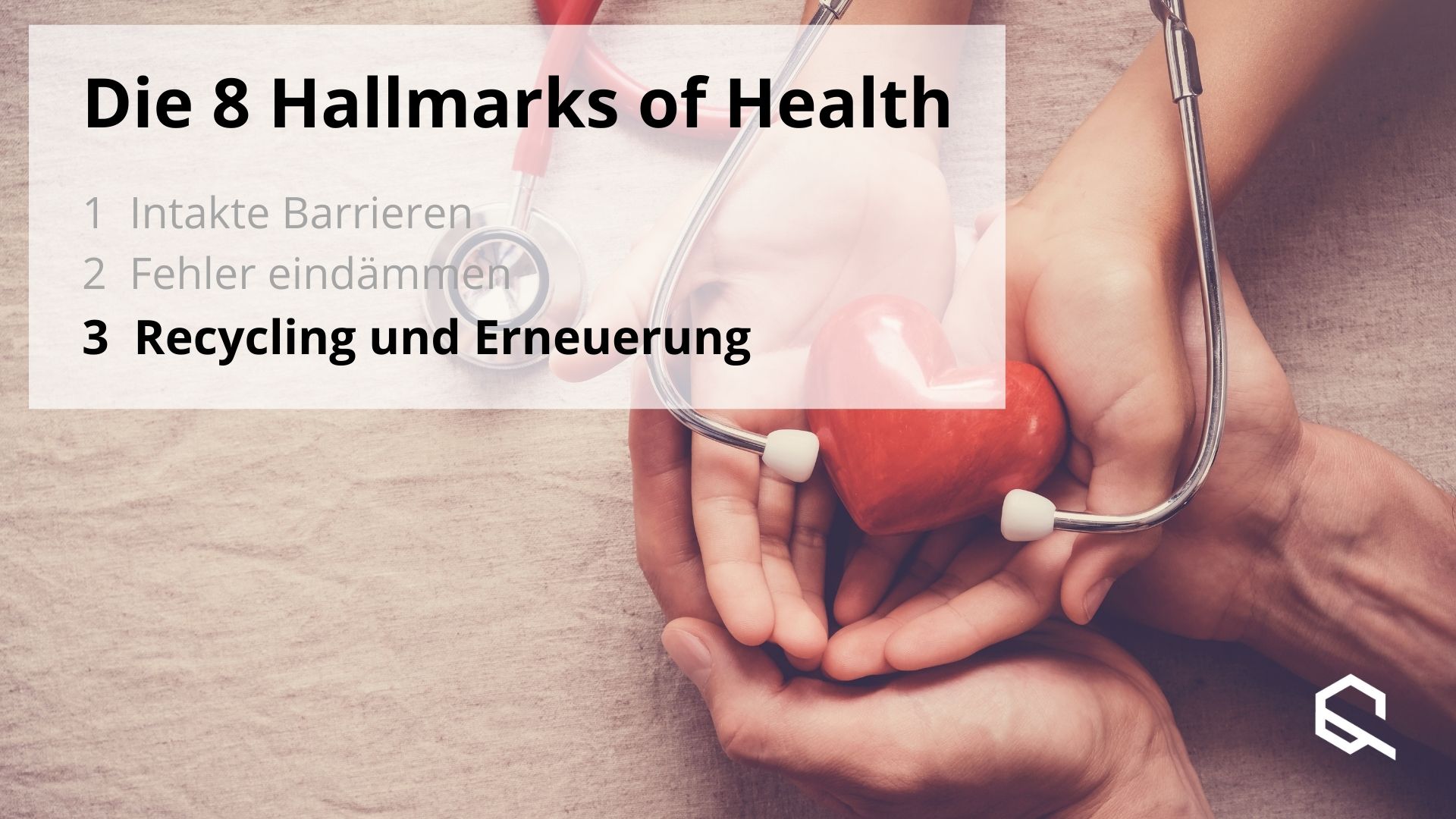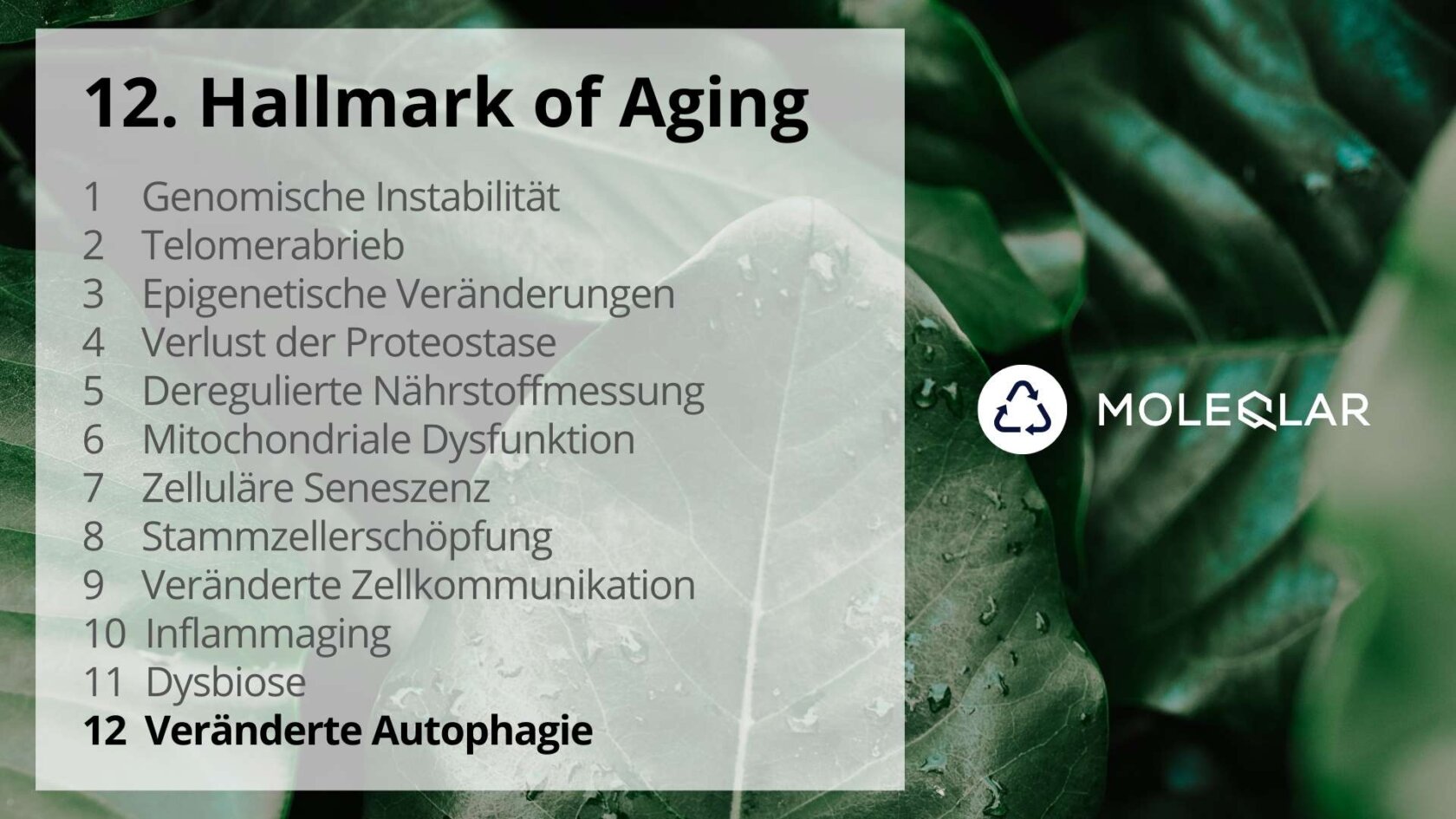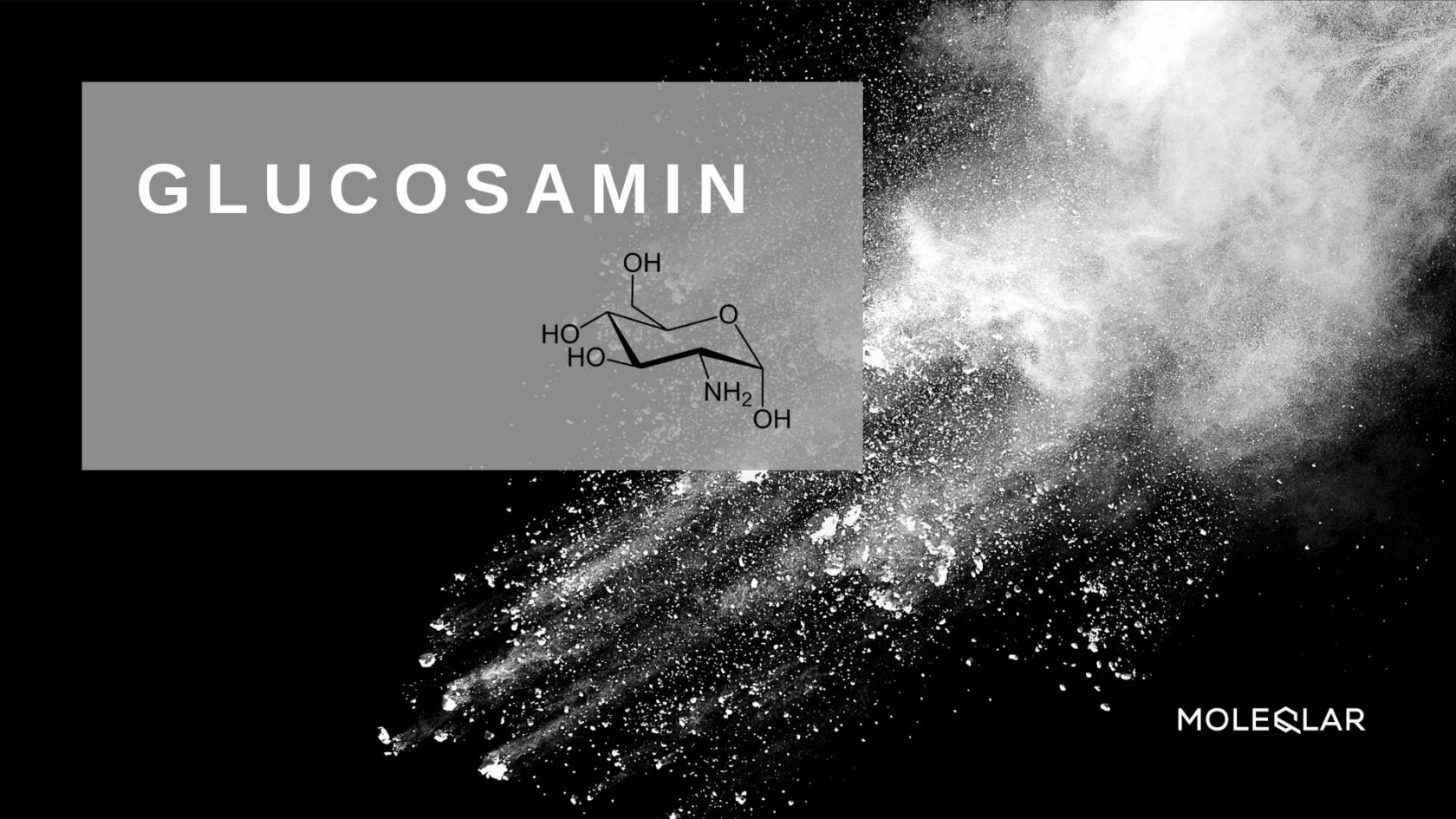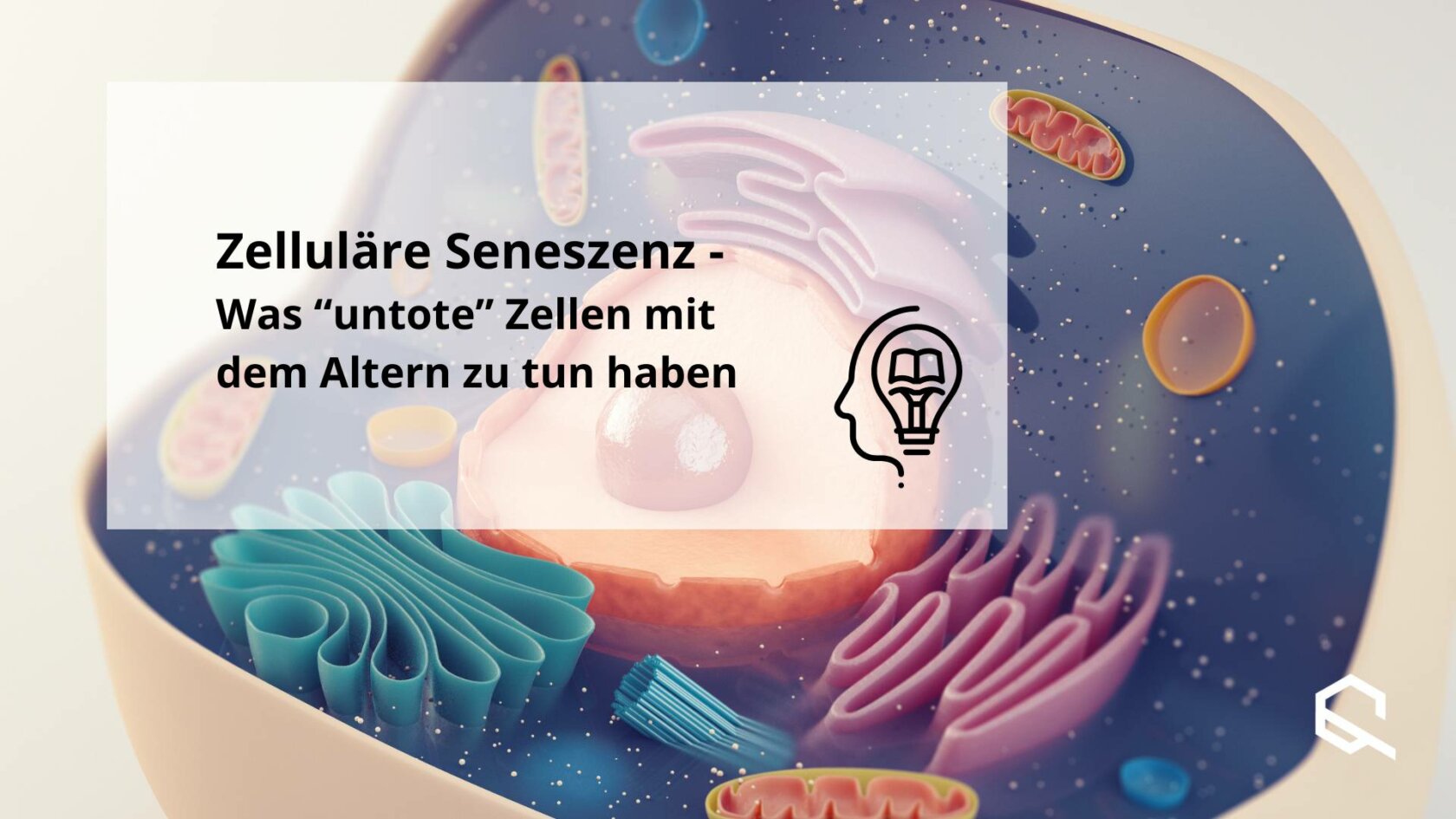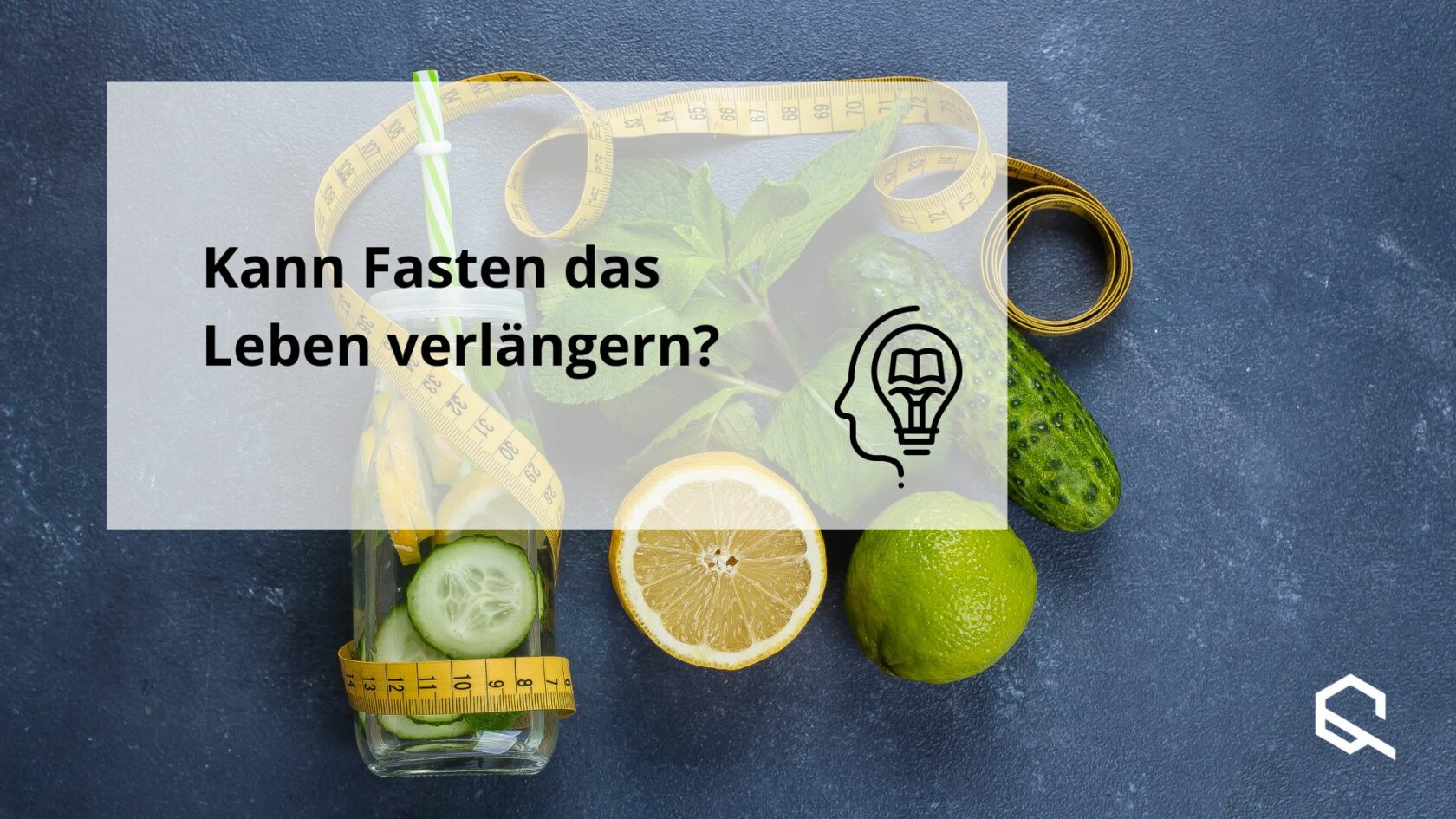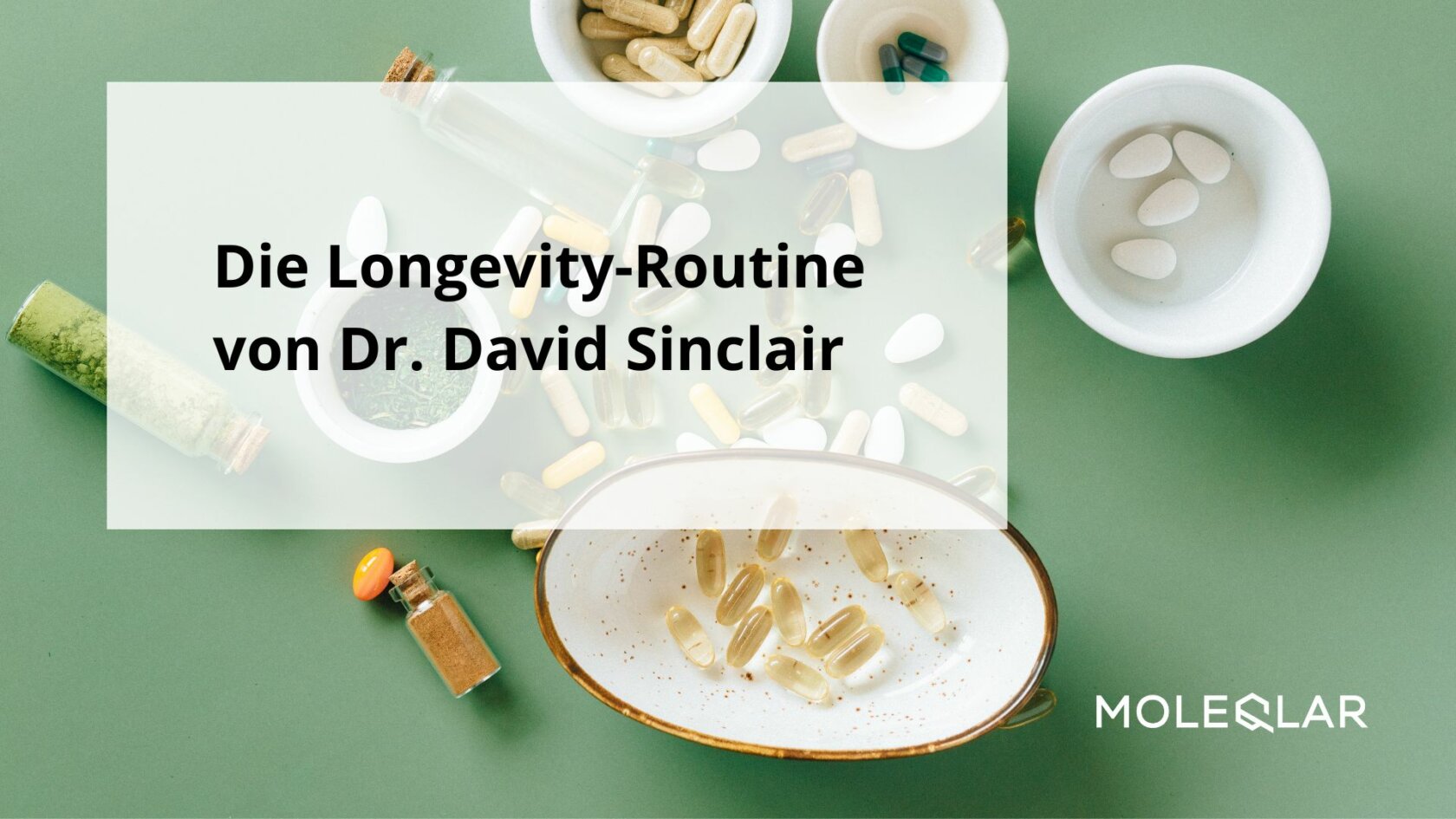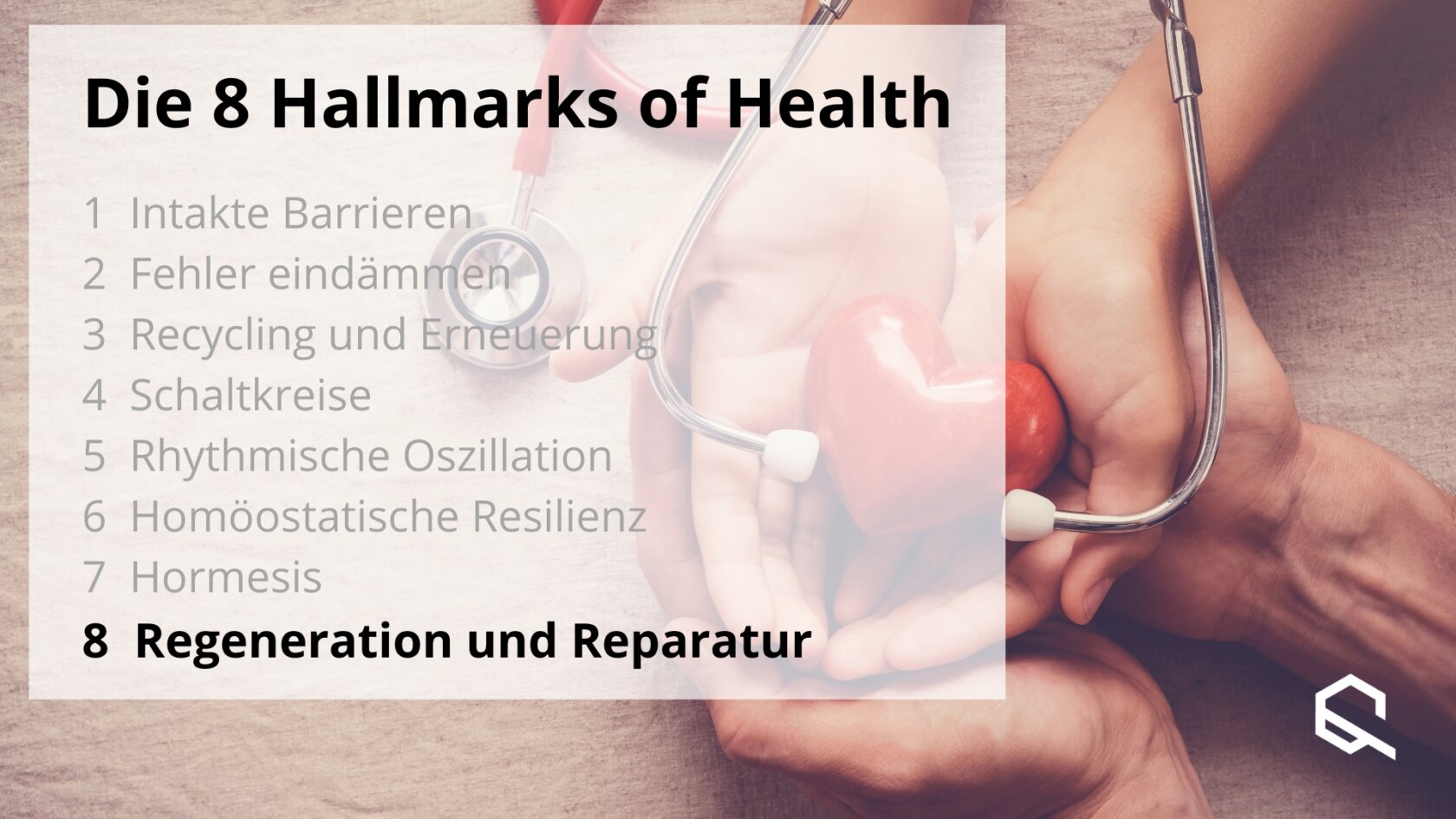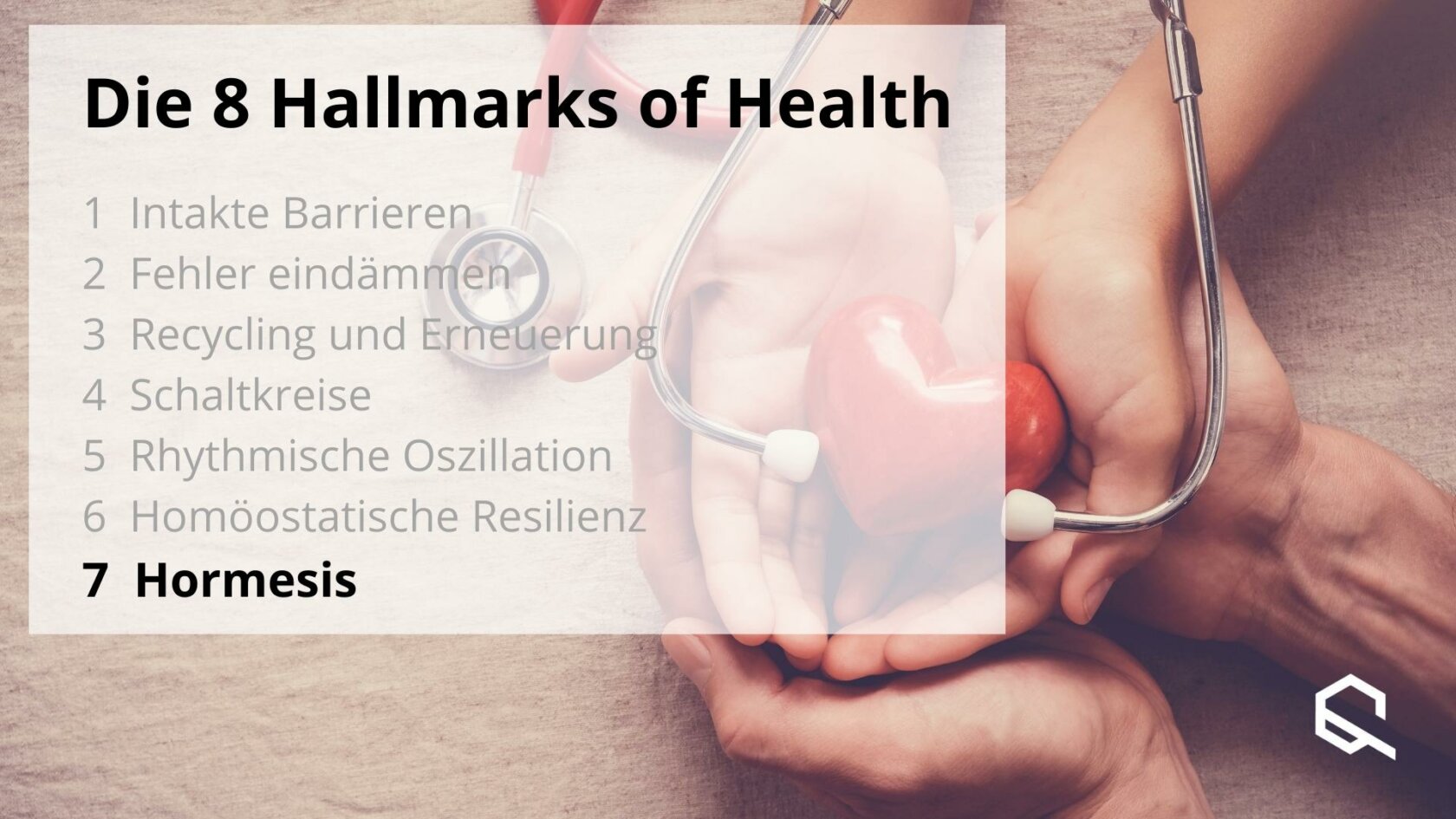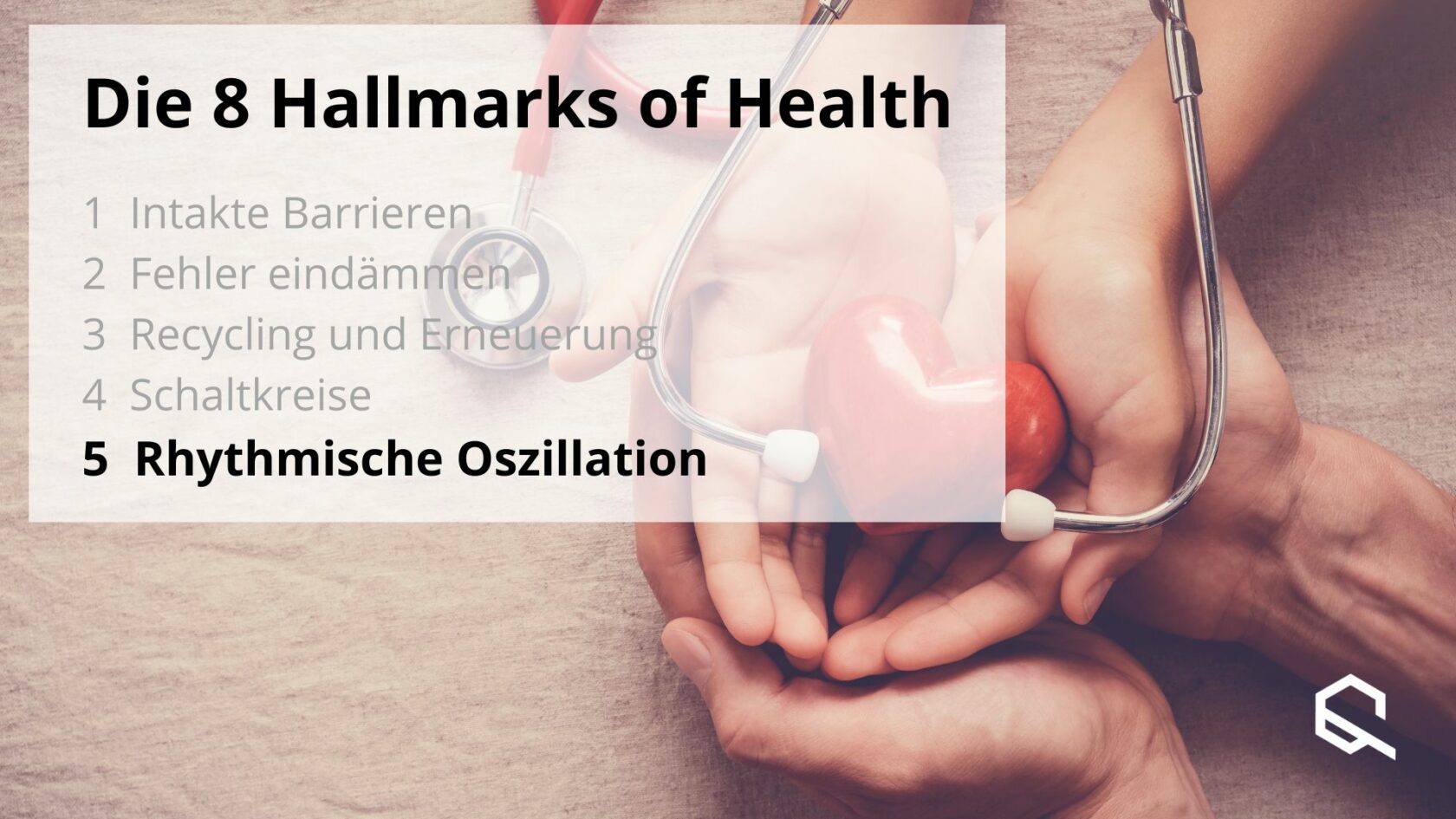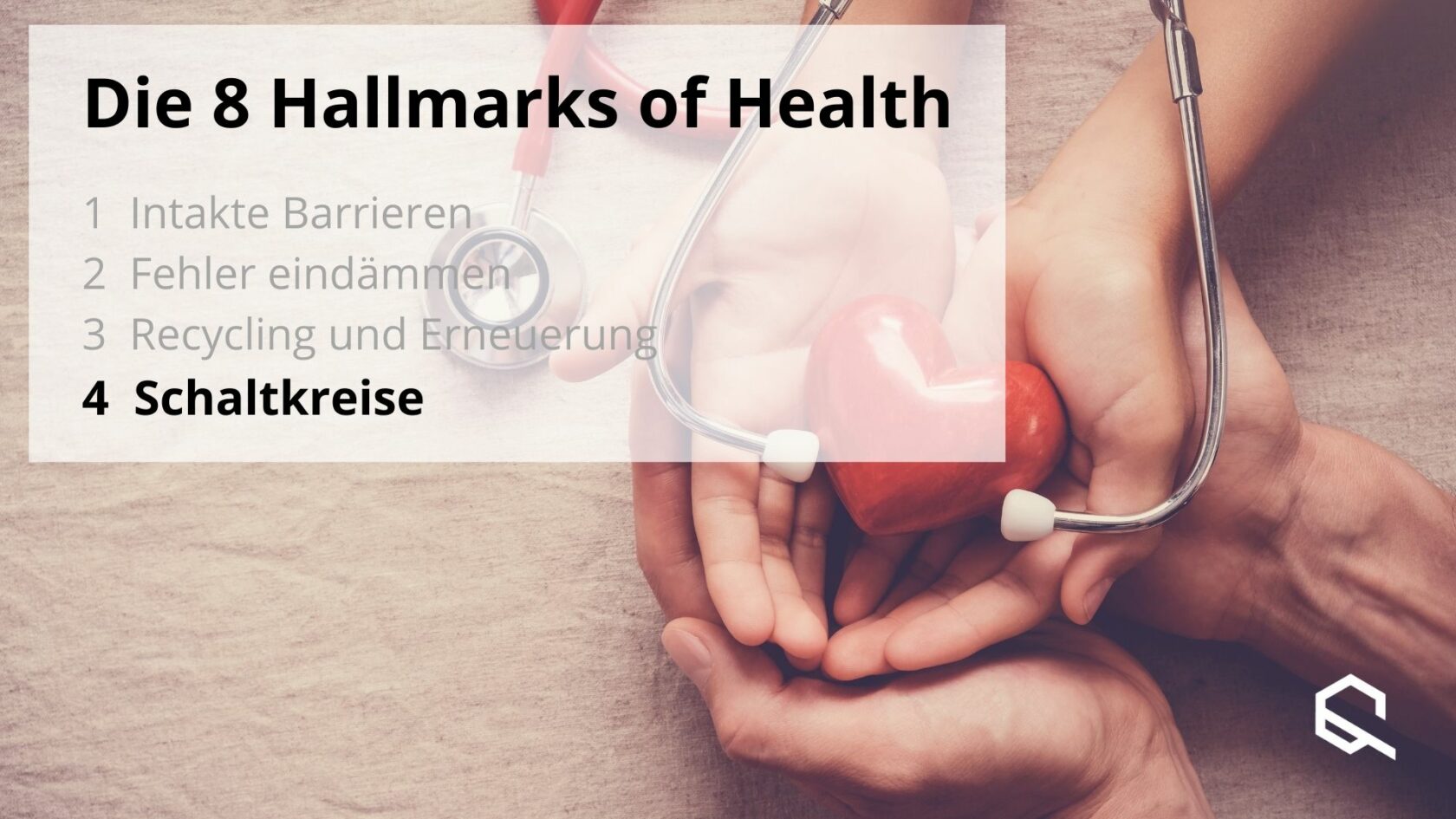Recycling - a term that you are sure to come across again and again in everyday life. Be it on the topic of waste or sustainable production of various products: Recycling makes sense because it saves both resources and energy. Our body also uses these advantages for itself. In addition to saving energy and resources, recycling is an effective tool for the body to prevent damage and to repair damage that has already occurred. The latter can sometimes be a difficult undertaking. To prevent damage in the long run, most components are regularly renewed, regardless of any damage. Large molecules are disassembled into their individual parts and reassembled - recycling - throughout their life.
Cell death, removal and replacement
One of the most obvious renewals of our body is the regular reproduction of the skin layers. The top layer of skin slowly sloughs off and is replaced from below by ever new and further dividing cells. However, all this happens under our radar.
Did you know that house dust consists of up to 80% skin flakes? Of course, these shed skin flakes cannot be recycled, at least not by our body into new cell components. Nevertheless, it is cell renewal that is supposed to prevent damage. This is because the skin barrier is an important part of our defence system against harmful environmental influences and pathogens, as we already learned in the first part of the Hallmarks of Health series.
However, not only our skin renews itself regularly, but almost all cells in the body do so. As soon as cells die, they send different signals to start recycling. First, there are the signals by which the dying cells are found by phagocytes (scavenger cells). These give the direction in which the phagocytes must move through the bloodstream and tissue to find the dying cells. They then recognise the dying cells by markers presented on the cell surface. These markers activate phagocytosis - the uptake of the dead cell components into the phagocytes.
These processes are normal functions of the immune system and otherwise serve to eliminate foreign bodies. To prevent the body from assuming an infection and starting a strong immune reaction, the dying cells additionally release anti-inflammatory substances. These inhibit an excessive immune reaction. A strong immune reaction is important when it comes to removing pathogens (see Hallmarks of Health Part 2), but in the case of self-induced cell recycling this is not necessary and is only a waste of energy or tissue damage.

Recycling needs balance
So the natural mechanism of defective cells is that they want to be found and recycled by phagocytes. It is different with cancer: tumour cells often send exactly the opposite signals. They inhibit the signals that activate the scavenging process and amplify signals that inhibit phagocytosis (CD47). In this way, they ensure their survival.
Have you ever heard of homeostasis? This is a very important principle in different areas of the body. The term describes the maintenance of a physiological balance. Recycling is about the balance between degraded cells, newly formed components and the pool of resources that are used for reconstruction. If this balance is maintained, the body can work as efficiently as possible without endangering its state of health.
As you may already know, cellular processes occur at different speeds depending on the tissues in your body. Cell turnover also occurs at different rates depending on the tissue. While constantly working cells produce more energy and frequently used cells need to be renewed more often, there are also tissues where there is less activity and therefore less risk of damage. This adaptation also occurs in the renewal of the cells themselves. Most components of the blood, for example, have a very rapid turnover, while cells of the nervous system and heart muscle cells can be recycled relatively slowly, if at all. This also explains why neurodegenerative diseases such as Alzheimer's or Parkinson's cannot be cured in their progressive stages, but only slowed down. This is because complete regeneration of tissue that has already lost its function is only possible to a limited extent with these cells.
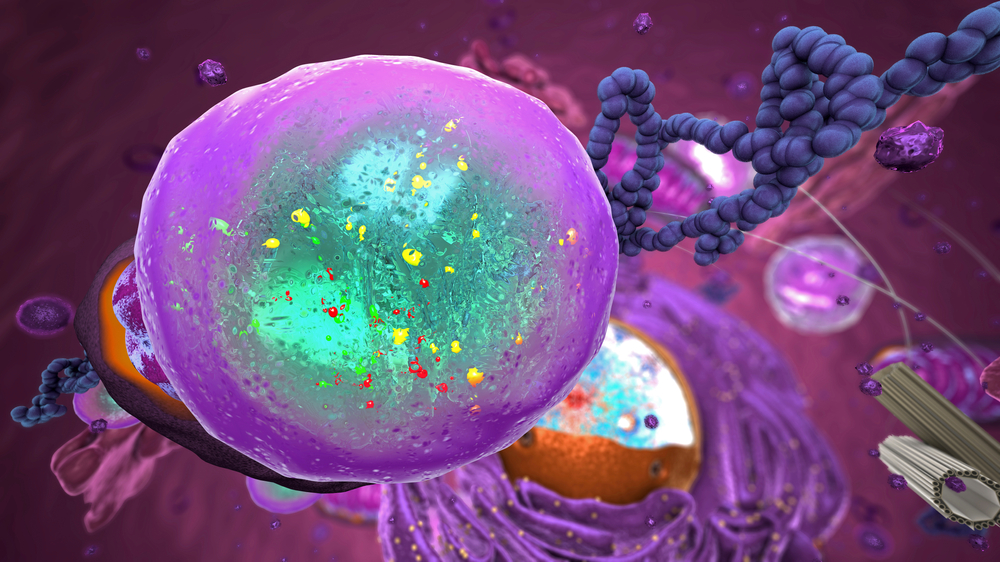
Autophagy - Cell internal digestive system
When you eat food, it is broken down into its individual components by various processes and enzymes so that your body can then use these components. Every single cell has a similar digestive system - the autophagolysosome. If your body does not have enough energy reserves or misfolded proteins are detected, the autophagosome absorbs proteins from the cytoplasm. The bubble-like phagosomes then fuse with the so-called lysosomes and form the autophasolysosome. Lysosomes are filled with a kind of digestive juice, which has an acidic pH value and contains digestive enzymes. Experiments have shown that this mechanism is vital for the cells. If autophagy does not work, defective proteins and organelles accumulate in the cytoplasm and the cell dies. You can find out more about autophagy in our article 'What is spermidine?
You've probably heard of keto diets, interval fasting, or calorie restriction? These very popular diets stimulate autophagy and, according to studies on model organisms, have a positive effect on health and lifespan.
Other recycling mechanisms for proteins
Besides the autophagy mechanism, there is also the ubiquitin proteasome in the intracellular space. If a protein is "ubiquitinated", it receives the "to be disposed of" stamp, so to speak. Subsequently, all proteins with this stamp are degraded by the proteasome.
Although the autophagy mechanism works very effectively, it is limited to the cell interior. Some diseases are characterized by the accumulation of defective proteins outside cells - for example, tau and beta-amyloids in Alzheimer's dementia. The transport of these proteins out of the cell occurs through parts of the autophagosome. It is therefore necessary for our health that the recycling mechanisms can do their job in such a way that damaged parts can be replaced. Therefore, it is important to keep autophagy healthy as the most important recycling system.
One possibility discussed in research is the molecule spermidine.
Literature:
López-Otín, Carlos, and Guido Kroemer. "Hallmarks of health." Cell 184.1 (2021): 33-63. https://pubmed.ncbi.nlm.nih.gov/33340459/
Images:
The images were acquired under licence from Shutterstock or Canva and marked accordingly.



